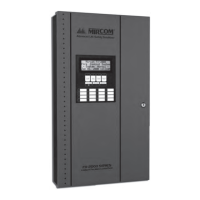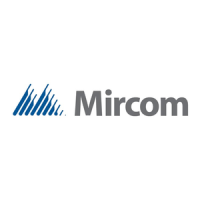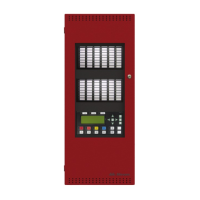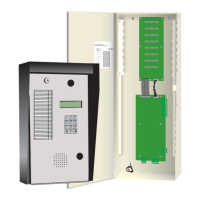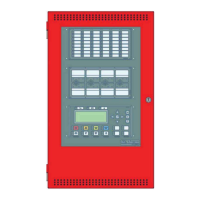Operating Conditions
74
Operating Conditions
Five conditions may be identified by the PRO-2000. Four of those are considered Off-Normal.
• Normal: Everything is as it should be.
• Alarm: triggered when a fire detection or alarm initiating device (e.g. smoke or heat detector, fire alarm station etc.) goes into
alarm.
• Supervisory: Triggered when a safety system component which IS NOT directly connected to the PRO-2000, but is connected
to one of its modules is in an Off-Normal condition and used for the activation of a sprinkler flow switch. NOT to be confused
with Trouble.
• Trouble: Triggered when an integral component of the PRO-2000 (e.g. electronic component, detector, monitor module, cable,
etc.) is found to be defective or faulty. NOT to be confused with Supervisory.
• Status: Triggered when a status change is detected on a connected device or system. These devices or systems are not part of
the PRO-2000, but are connected to it. For example, a monitoring input can be used to check the status of a door (open or
closed).
Display Modes
The PRO-2000 processes and displays information on the LCD in one of three modes: Normal, Single event display, and Dual event
display.
• Normal condition - All Systems Normal and the current time, HH:MM:SS, and date, YYYY:MM:DD, display.
All systems normal
HH:MM YYYY:MM:DD
• Single event mode is the default display mode for new and cleared conditions. The LCD displays events one at a time using its
two display lines. To view additional information regarding the displayed event press and hold the More push button.
Alarm #1 of 1 <NEW> HH:MM:SS
Protected Area Name (User defined)
• Dual event mode is the default display mode for acknowledged conditions. The LCD displays two events at one time: the oldest
event of a certain type with the highest priority, for example Alarm, displays on the first LCD line and the newest event of that
same type displays on the second LCD line. If only one event is resident in the system, that event repeats on both lines.
Alarm #1, Protected Area Name (User defined), HH:MM:SS
Alarm #3, Protected Area Name (User defined), HH:MM:SS
Off-Normal Sequence of Events
The following is a sequence of events after detecting an off-normal condition:
1. The LCD displays that condition in Single Event Mode. The <NEW> tag displays. The buzzer starts to sound and the
corresponding LED starts to flash.
2. Read the LCD information and acknowledge the condition using the Acknowledge. Acknowledge push button (Note the correct
access level is required for acknowledgement). If no other events occur, the LCD automatically switches to the dual event mode
displaying the highest priority event in the list. If that is the only off-normal event in the system, both lines display the same
message. Otherwise the last event in the list is displayed on the second line.
3. Investigate the situation. After the situation clears, select the condition by pressing the appropriate Display mode push button
and navigating to the event to be cleared.
The LCD switches back to Single Event Mode and displays the condition.
4. Press the Reset push button (Note the correct access level is required for the reset function).
The <CLR> tag displays. The buzzer starts to sound and the corresponding LED starts to flash.
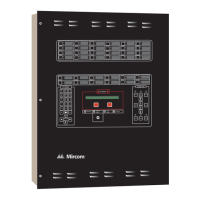
